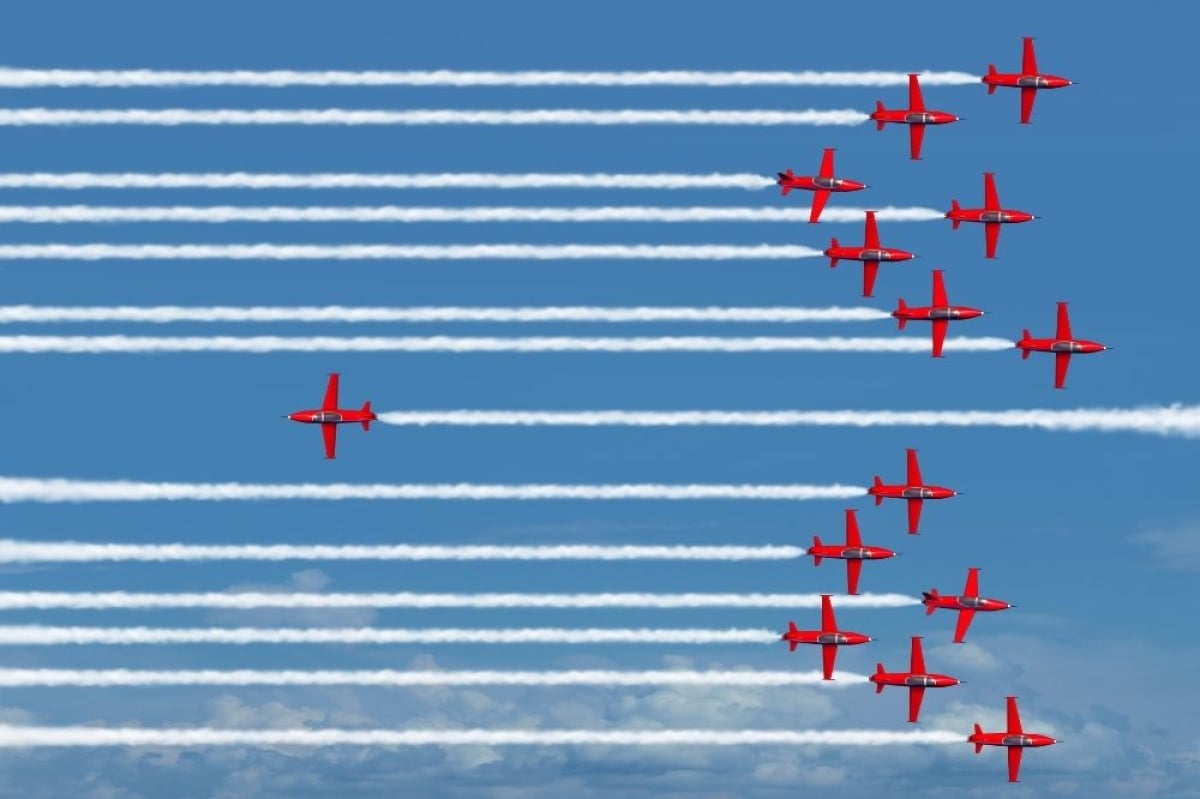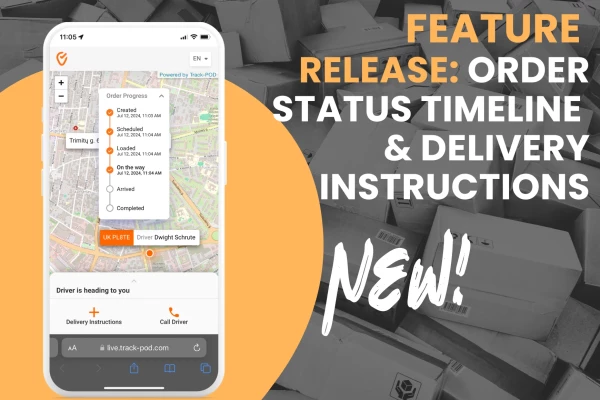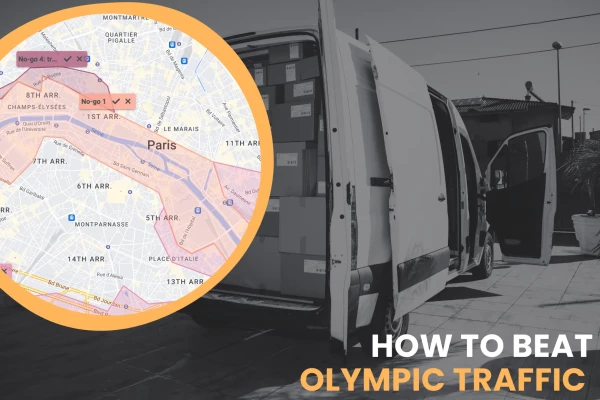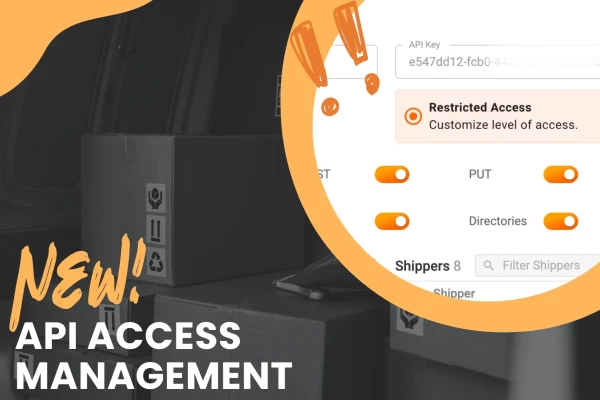Returns Management Guide: Ace Reverse Logistics in 5 Steps

by
Yulia Miashkova
August 10, 2021
The supply chain is one of those things that operate by strict logic. First come materials and suppliers, then comes freight logistics, and then there's a customer receiving their order. But sometimes, even the supply chain logic can be reversed.
What happens when the customer isn't at home to accept the package? Or maybe the goods were damaged during transportation and something needs to be replaced? Or maybe the size of the garment the customer ordered is wrong?
These are all reverse logistics scenarios, i.e. when the supply chain logic works in the opposite direction and the merchant/warehouse becomes the destination rather than the point of departure.
In this blog post, we take a close look at reverse logistics, particularly returns management.
What is reverse logistics?
Reverse logistics examples
What is returns management?
Benefits of efficient returns management
Build your reverse logistics process in 5 steps
Reverse logistics wrap-up
What is reverse logistics?
First things first, we need to define the terms.
Reverse logistics is the movement of goods from the end customer to the manufacturer or merchant.
In this case, the supply chain logic is reversed, which means that supply chain management needs to also account for the return process. Effective reverse logistics management is one that boosts customer loyalty and is cost-effective for the business.
Traditionally, the 5 Rs of reverse logistics are returns, reselling, repairs, repackaging, and recycling.
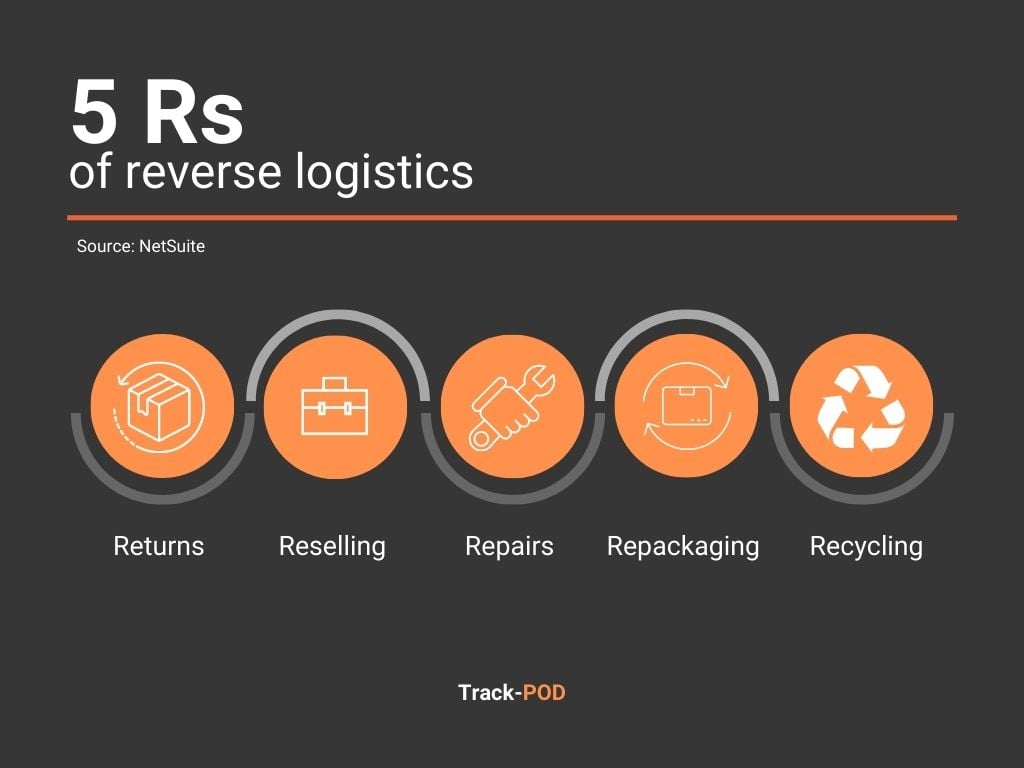
Let's break it down.
Reverse logistics examples
We've gone over some use cases of reverse logistics but let's dive deeper into the varieties of reverse logistics process in e-commerce and beyond.
Delivery failure
Delivery failure occurs either when the customer wasn't at their specified delivery address to receive the package or when there's been a mistake with loading or transportation. For example, an order can be partially delivered when one item was loaded incorrectly or damaged en route. In this case, the driver needs to return to the delivery destination with the correct items in the right condition to complete the order.
Returns
Product returns are a natural part of order fulfillment in e-commerce. Many things can go wrong with a package purchased in an online store. Whatever reasons the customer might have to return the goods, it's the seller's job to be able to issue a refund and have a returns process in place that allows the customer to handle returned products quickly and efficiently.
Repair
Sometimes, when there's a maintenance agreement between the customer and the manufacturer, the customer returns an item to be repaired. This is another case of managing returns that also falls under customer service and is one of the processes that determine the value of your company for the buyer. Depending on how easy or hard it is to return an item for repair, you'll either gain or lose value in the eyes of the buyer.
Recycling
Whether or not you have sustainable, i.e. carbon-neutral delivery processes, you can still have green practices such as product returns for the sake of recycling. This applies to products reaching their EOL - end of life - and prompting customer return as they're no longer usable. In this case, you, again, need a reverse logistics process in place that gives customers the option to return the product they previously purchased to have it recycled.
Now that we're familiar with examples of reverse logistics, let's take a closer look at the logistics of returns.
What is returns management?
Returns management refers to both processing returns which goes together with issuing a refund or building a process that prevents product returns in the first place.
A return is never a good thing for the business. It impacts the sales figures, implies additional costs and shipping, as well as puts a strain on warehouse and inventory management. That is why a big part of returns management is preventing product return and building a competitive advantage out of manufacturing and processing top-quality products, to begin with.
Retailers say sustainability is an important factor in managing returns, but admit that their actions don’t always line up with what they share publicly.
In Software Advice’s new survey with Retail SMBs, only 54% dispose of product returns responsibly and as many as 38% are burning or sending items to landfills, despite sustainability efforts.
Benefits of efficient returns management
Building an efficient returns management process comes with multiple benefits. Let's review them below to understand the value each return can create for your business.
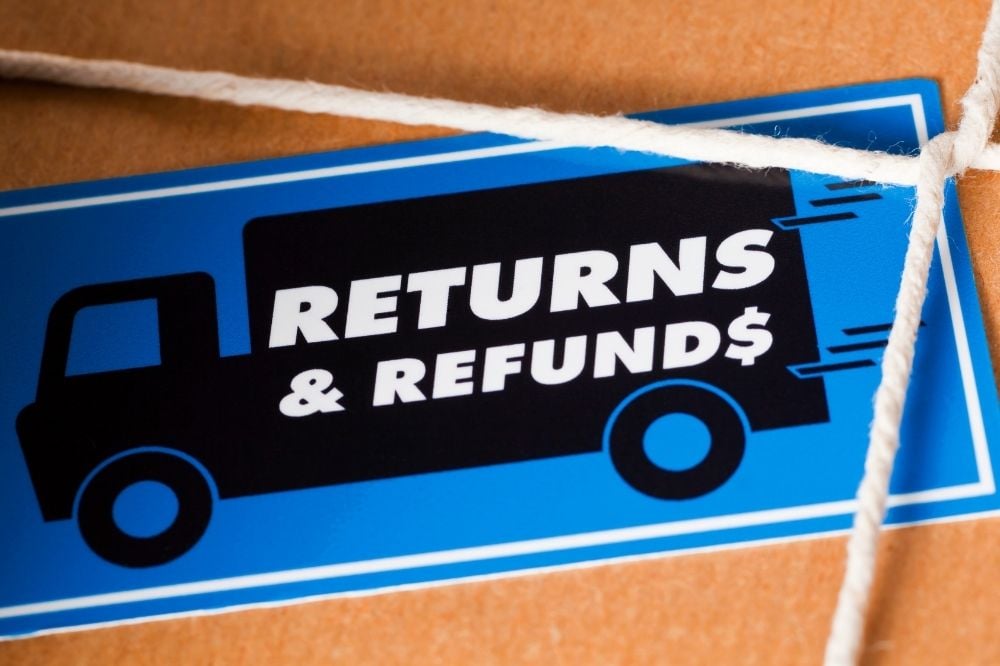
Order fulfillment
In 2021 e-commerce retail, order fulfillment standards extend far beyond getting the product to the customer. Or rather, it goes both ways, with returned goods moving from the customer to the warehouse. Companies that have proper inventory management and returns management systems in place make reverse logistics and return management cost-efficient.
Added brand value
Companies that have efficient distribution and effective reverse logistics processes enjoy a competitive advantage within their industries. Among the many players on the market customers will always go for the product with a zero-friction flow. This includes such customer benefits as the refund option and logistics reverse.
Building a clear process that makes it easy to return the product will put you forward among similar companies and reverse logistics providers.
Customer loyalty
Customer satisfaction in e-commerce comes from many things but it all boils down to customer-centricity. Having a clear reverse logistics process means enhanced customer satisfaction and trust in the business. Shipping doesn't stop at getting the product from the warehouse to the customer's doorsteps. Your returns process needs to be transparent and hassle-free too.
When your business provides this additional value via quality reverse logistics, your product sales figures go up as your costs go down.
Sustainability
E-commerce retail is changing all the time. With an emphasis on sustainability and green shipping options, customers care about their disposal and want to be able to control their own waste. When it comes to products made of non-biodegradable materials such as plastic or batteries, having a returns system in place means that you can help customers manage their waste by collecting materials for recycling.
Lower costs
When you have a clear refund and returns process in place, your inventory management, delivery processes, warehouse and product management, and the entire supply chain practices are all adapted to returned products. Since returns are an integral part of retail, you can come prepared and optimize your costs and value based on long-term data and key performance indicators.
The earlier you start processing returns and managing the returns logistics, the longer you have to build cost-effective reverse logistics processes that make each return an easy task.
Build your reverse logistics process in 5 steps
As long as you do self-delivery, there are many ways to build and improve your reverse logistics processes. Let's review the basic steps you can take to ace reverse logistics management with a perfect return flow.
1. Invest in transportation management software
If you've worked in supply chain management long enough, you know that every process can be improved with reliable real-time and historical performance data and the right software. From manufacturing to inventory to distribution, there are designated software solutions to help you manage every aspect of your supply chain - and reserve logistics is no exception.
A transportation management system (TMS) like Track-POD will help you build an efficient delivery flow with account for your fleet, drivers, and cargo. The beauty of having a delivery management system in place is that you can automate a lot of manual tasks like routing and route optimization. With proper distribution comes better company management and returns as part of reverse logistics become a service that you can incorporate easily.
2. Manage your tasks in a smarter way
With a transportation management system by your side, you can not only manage shipping. A system like Track-POD lets you create Delivery and Pickup tasks for your courier drivers, which means that returns and reverse logistics are naturally incorporated into your business flow. In addition to that, Track-POD lets you combine Delivery and Pickup tasks and create sequences for your reverse logistics workflow.

Companies that use delivery management software have much better control of their shipping and inventory. Features like load checks, automatic order processing, and courier dispatch make it possible to reduce cost per delivery/return and eventually provide free delivery and returns too.
3. Sort out order statuses & extend driver user rights
A big part of returns management and reverse logistics as such is accountability and delegating. For example, you need to make sure your transportation management software offers flexible order statuses that account for all reverse logistics scenarios. Track-POD system, in addition to Delivered and Not Delivered, lets your drivers choose the Partially Delivered order status whenever they need to return to the delivery location with the right product.
In addition to having flexibility in order statuses and the option to return to a delivery address, your drivers should also be empowered to handle returns independently. Track-POD gives drivers the Order transfer option which means they can fulfill each other's shipping whenever something goes wrong. With this kind of accountability, each return becomes a shared responsibility of all drivers.
4. Track your returns
The same way you would track your deliveries by monitoring each driver's location in real-time, you get to track and trace each return both when the driver is online and offline. Delivery management software like Track-POD offers the track and trace feature that lets dispatchers and customers monitor the real-time location of courier drivers en route to make a delivery or return.
By giving your customers the tools to monitor a returned product the same way they were monitoring the delivery online, you keep customers at the center of the supply chain. Giving the option to return a package and receive a refund, you keep the excellent service which helps you build further trust in your brand and supports your competitive product advantage through reverse logistics.
5. Master reverse logistics analytics
Your supply chain management is only as good as the data behind it. Inventory, distribution, and shipment analytics all need to be at your disposal at all times. By utilizing a transportation management system like Track-POD, you also get access to reverse logistics analytics on each return your company processes.
Using analytics is key to mastering your returns management flow, optimizing your costs per return, and the overall reverse logistics process. The same way your company uses data related to your market and the industries in it, you can't thrive without reliable returns analytics. Using Track-POD, you can be sure you have data on each return that helps you move your whole reverse logistics process forward.
Reverse logistics wrap-up
Together with materials, manufacturing, warehouse, product, and disposal management, returns are a natural part of the supply chain. Reverse logistics is there to make sure you can provide the return service at low costs for the business. Across industries, reverse logistics comes with a lot of challenges but ultimately, companies are judged by the quality of their reverse logistics and related processes.
I hope this guide gives you enough insight into reverse logistics and how it can help move your product forward. Use the tips above to build and improve your returns process and customer satisfaction will never be out of stock for you.
- Transportation management
About The Author
Yulia Miashkova
Growth marketing manager with a background in public relations, SEO, social listening, and Account-Based Marketing.

